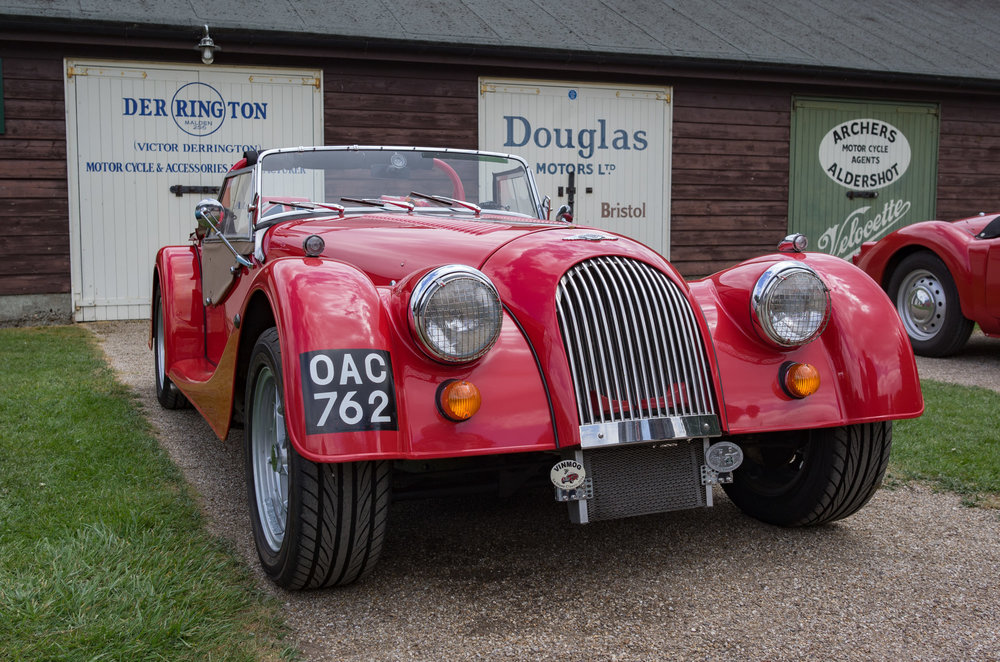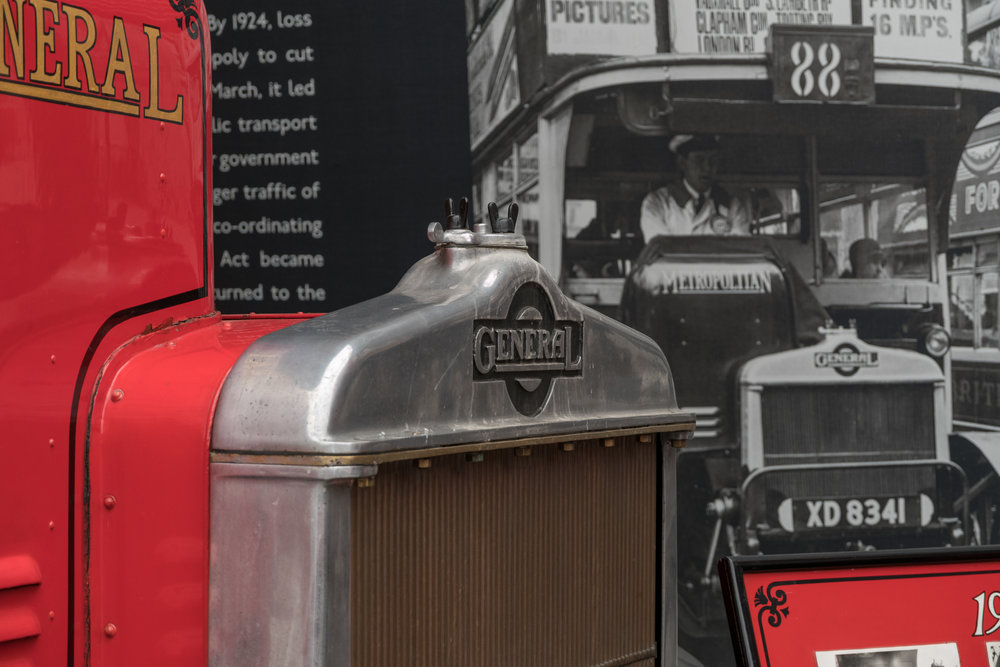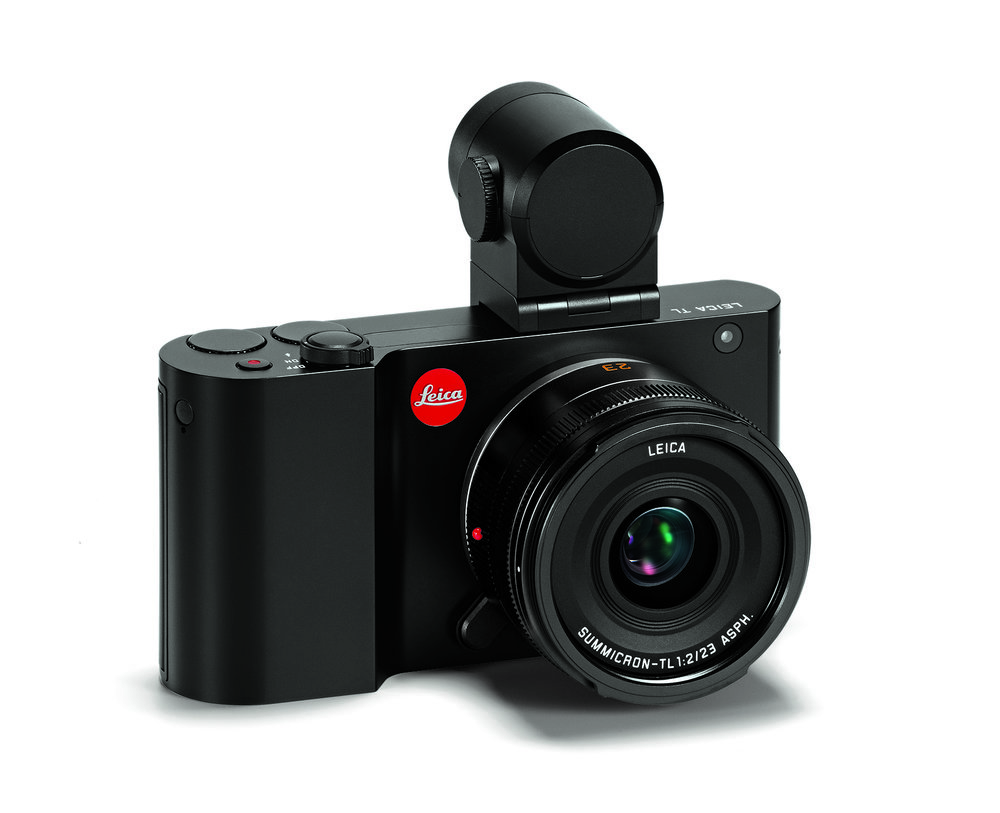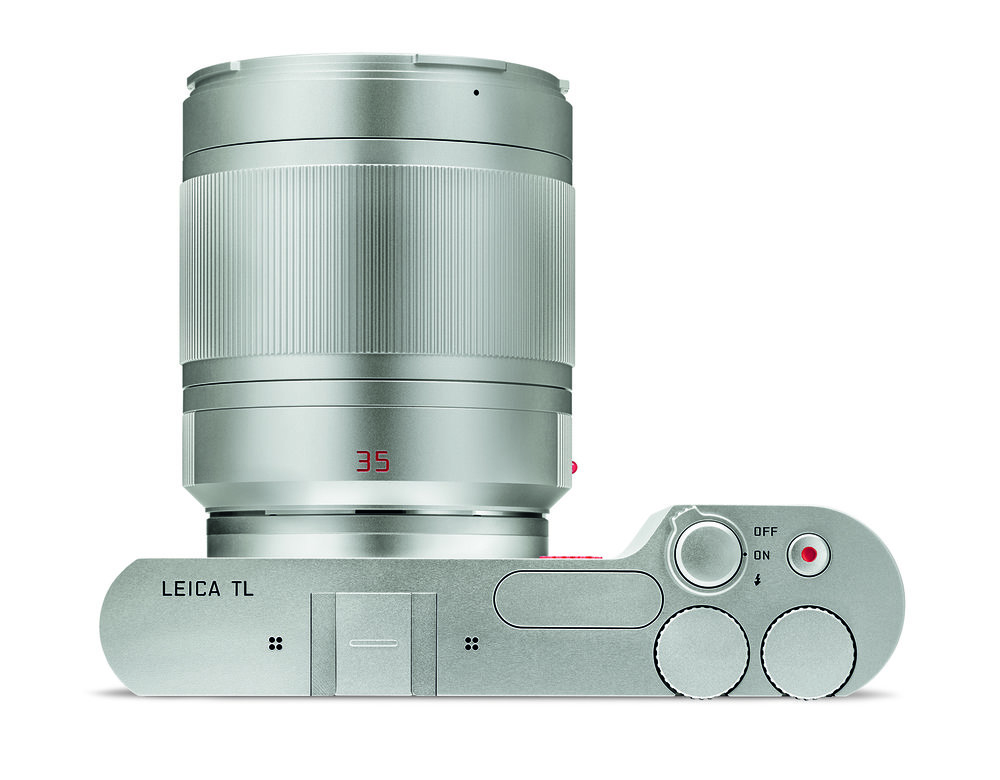
Four years ago this week Leica took a courageous step into the wild blue yonder with the announcement of the unique Leica T. It was also the company’s first foray into the APS-C system world.
At the time I noted in my diary that the decision to use an all-touch control system was a brave choice, although I did have severe doubts whether or not it would be for me. Some considered that the T represented an attempt by Leica to attract wealthy individuals from the smartphone generation who would not otherwise be motivated by a specialist camera. In other words, one strictly for the boutiques. On the other hand, many experienced Leica users I know have taken to the T/TL with enthusiasm.
I also commented on the prices of the lenses which required a substantial financial commitment to the system. The body, as now with the TL2 and CL, was not too expensive. Indeed, the new CL body is “attractively priced”, at least by Leica standards. But the lenses are a different matter. They are pricey.

Chip off the old block
The hewn-from-a-block-of-aluminium TL cameras do indeed have their fans. Several friends of mine love the interface and do not mind the absence of a built-in viewfinder. Indeed, some prefer the add-on Visoflex finder because it can be tilted upwards to help with low-down shots. They also laud the image quality, something that has never been in question.
For those of us raised on viewfinders, using a screen for composition is alien, despite recent our experience with smartphones. But I can understand that photographers whose first experience is with smartphones could well feel more confident with a screen-based camera such as the TL2. In that sense, and despite protestations from the likes of me, Lecia was probably right in testing the T concept back in 2015.
I have reviewed or owned the T, TL and TL2 at various times and I grew to like the touch-screen control system in the face of initial resistance. And, when the fancy takes (and with the Visoflex mounted) it is easy to shoot in aperture priority mode without needing to access the screen. Moreover, there are no trigger-happy buttons to press by mistake as there are on the CL. With my new commitment to the CL and my ownership of a Visoflex (for the M10), the idea of picking up a second-hand TL2 as a second body has its attractions.
But back to the lenses. After four years, the system is more extensive, with three excellent zooms covering the 35mm-equivalent range of 16mm to 200mm, and a relatively oddly-matched collection of primes (18mm Elmarit, 23mm Summicron, 35mm Summilux and 60mm Macro Elmarit). They are all outstanding in their way, but collectively they hardly provide a complete solution. There is a need for alternative fast and slow options in the primary focal lengths and a zoom extending to at least 300mm equivalent.

The TL/CL cameras do have one significant advantage for Leica owners when comparing with Fuji, Sony and the like. The system is designed from the ground up to work well with Leica M lenses via the well-engineered M-Adapter T. The firmware includes lens profiles, and the six-bit coding system on all modern M-mount optics automatically sets up the camera. It is one of the reasons many Leica owners buy the TL or CL which offer a seamless partnership with their stock of M lenses, rather than other mirrorless cameras.

Omissions
Unfortunately, there are two significant problems with the TL lens lineup: Lack of stabilisation and weather protection. Their absence was not too worrying four years ago when the system was launched. However, with hindsight, they have become important factors in consumer choice.
In the premium lens sector occupied by Leica (and especially bearing in mind the price of these lenses), both enhancements are now becoming universal and are definitely in demand. Whether they are essential or not, is a moot point. But the fact is that most buyers believe that they need them.
Experienced Leica users — in particular, M enthusiasts — have managed without stabilisation or weather protection (on the lenses at least) for years. Perhaps they do not see the need for stabilisation as being so vital. It is telling, however, that appropriate SL lenses do have stabilisation.
Of course, weather-protected lenses need similarly proofed bodies if they are to offer a complete solution. Perhaps Leica missed a trick in not equipping the CL body with protection, as the first step towards conformity with the latest trends. However, I can understand that to have done so at this stage would only have highlighted the shortcomings in the lens range.
The company now finds itself in a chicken-and-egg situation — redesign the lenses and leave the bodies trailing, or update the bodies and live with a catch-up lens range. Without a doubt, the factory is well aware of all these issues and must be working to find a solution. Just conceivably, however, the factory does not see the lack of stabilisation or weather protection as an important issue and we could be waiting a long time.
Should Leica have anticipated these issues before the launch of the T in 2014? Perhaps. There was already clear evidence of the way the industry was moving. After all, only 18 months later the SL arrived, complete with in-lens stabilisation. If the 24-90 SL zoom needs stabilisation, then surely so do the 18-56mm TL and the 55-135mm TL.

Counter argument
There is a counter-argument which says that stabilisation and weather protection are fripperies. They add to the size and weight of the equipment, not to mention the already substantial cost, and that when all is said and done it is the image quality that matters.
I can understand that view and, personally, I enjoy the CL and the lenses, taking modest precautions and adopting sufficiently fast shutter speeds to compensate for lack of stabilisation. After all, we do this with the M. But it isn’t the complete answer. Whatever we think about the need for more complication, the simple fact is that the market now demands optical stabilisation and some degree of weatherproofing.
It is likely that the missing features on the TL lenses have a dampening effect on demand. Those predisposed to Leica do not worry so much, as I mention, but the newcomers that Leica needs to attract are undoubtedly tempted by the technical advantages, and lower prices, offered by both Fuji and Sony.
The omissions are all the more mysterious when we consider the Leica-designed DG lenses for micro four-thirds. In-lens stabilisation is there in the zoom lenses, the 42.5mm Nocticron and the 45mm DG Macro Elmarit. Weather protection is present over most of the range. These are superb lenses and are right up there with the competition in both technology and image quality.
Perhaps someone should rub the magic lamp of Wetzlar and transform them into TL-mount devices, even with the certainty of larger size. They possess another feature which I like and which is missing from the TL line-up — a physical aperture ring. It is present on all the newer Leica DG m4/3 primes.
Loyal following
The CL has already attracted a loyal following. It is capable of bringing converts into the Leica fold, people who might eventually trade up to an M or an SL. However, if Leica is indeed earnest in its desire to compete in APS-C, as I believe it is, the range will have to be brought up to date with the technicalities that we see in the Leica DG and SL lenses.
So where next with Leica’s APS-C programme? My wish list would be headed by a mini SL rendered down to APS-C dimensions, equipped with weather protection and incorporating a Panasonic Lumix five-axis stabilisation system. It would be bigger than the CL, of course, but it would have the same relationship to that camera as does, for instance, the Panasonic Lumix G9 to the GX8. Or, for that matter, as do the Fuji X-T2 or H-X1 to the X-Pro 2.
I don’t know if borrowing and adapting the Lumix in-body stabilisation is possible, but if it were, it would be a huge step towards bringing the range up to date. I would also like to see the three zooms with weather protection and the 55-135mm (at the very least) updated to add stabilisation.

Another sensible move, in my opinion, would be the introduction of a Vario-Elmarit zoom with both stabilisation and weather protection to replace or complement the 18-56mm “standard zoom”. Ideally, it would cover the wider 16-80 range. The industry trend (and at Leica itself with the excellent 12-60mm DG Vario-Elmarit) is towards a wider opening gambit and a more extended reach than the traditional 28-85mm equivalent zoom.
It seems possible to make some of these longer-zoom lenses a little smaller. The 12-60 Vario-Elmarit is a good example. Despite its 120mm full-frame equivalent maximum zoom, it is no bigger nor heavier than the Olympus 12-40mm Pro which tops out at an 80mm equivalence. Tellingly, both these excellent lenses start at 12mm which is 24mm in full-frame speak.
Leica has come a long way with its APS-C system since 2014, and the new CL is clear evidence that the factory is committed to the crop-sensor range. But the competition is getting stronger (mainly, as far as potential TL/CL Leica owners are concerned, that means competition from the Fuji X system), and it will be fascinating to see how the design team reacts over the next four years.
More reading
- Leica TL2 long-term test (Jono Slack)
- Leica DG 12-60mm, ideal one-stop-shop zoom
- Leica T — review of the original model
____________
- Subscribe to Macfilos for free updates on articles as they are published
- Want to make a comment on this article but having problems?

Good post. Seems to resonate with all of us. Hoping Leica can hear this.
The TL2 is a nice concept but a bridge to far for those who wish to manually adjust on the fly, and the lack of built in EVF and less than stellar AF are issues. The CL is a small, cute, but ultimately strange device, with its unmarked interchangeable top dials proving a pain.
I would much rather prefer them refining the CL with the X1 body and pain, engraved dials.
Alternatively, a mini SL-APSC, which I agree would sell like hotcakes. Add a 23mm 1.4 and 24-70 2.8 constant equivalent to this and Leica would be firmly back in the APSC game. The fact that we don’t have these lenses yet is crazy, especially when Leica already have designs from the X113 23mm 1.7.
I tend to agree with you on the TL2 and CL. I can enjoy both cameras but, especially with the CL, I sometimes hanker for a more simple, X1-style control set up. The problem is, Leica has to consider the tendency for generation iPhone to look for a tick box of features, many of which don’t resonate with the traditional Leica user. I would dearly love to see a modern version of the X1, provided Leica could resist adding bells and whistles which aren’t needed. But I think it would need a static lens, a la Fuji X100 rather than the irritating in-out version on the X1.
There are persistent rumours of a new mirrorless camera, using either the M mount or L mount and I think we will see something pretty soon. Whether it will be a full-frame smaller SL or an APS-C model is unclear. One of the big problems is the size, weight and cost of SL lenses. They are totally unsuited to a cheaper, smaller body. But there is a lens family from the TL and CL which would do the job well, albeit lacking stabilisation and weather protection.
I own a TL2, and I really like it. It’s easy to use, ergonomically well designed, and the image quality is great.
I had owned the original T, and I hated it. Just coming off using Fuji, it was a real step backwards, and basically a frustrating mess. I’m glad they sorted it out with the 2, and I think now it would be a shame if the TL2 would be discontinued.
The CL seems to me to be a marketing designed camera, and seems to have meant to be everything the T / TL camera wasn’t (“forward looking”). Ultimately, it’s less interesting to me, mostly because there are “better” cameras on the market that match its capabilities at a much lower price.
I hope Leica do come out with a SL-style APS-c camera, much like Fuji did with the X-T line. It would show commitment on their part to the line in general.
Lenses – yes, we need more choice. We need a Summicron series, maybe 35, 50 in addition to the 23. A Summilux 16 would be nice (though undoubtedly huge!). And I guess a 24-70 f2.8 is pretty much required nowadays, for the “pros”.
Interesting times, and interesting options. Leica will probably surprise us all in June. They usually do.
CL/TL – Not interested at all, SL-Light – definitely yes.
Your article, is as usual, fullof insight and a pleadure to read for Leica fans
Thanks for your kind comment.
I haven’t found the image stabilisation button on my film M yet – but can still turn in an occasional reasonable snap.
Yes, I’ve looked for that. On my M240 I found that it started recording a video, very inconvenient. I accept what you say. But when it comes to APS-C and micro four-thirds zooms there is clearly a box-ticking exercise when choosing a system — and stablisation and weather protection are two of the biggest boxes. I manage quite well with the unstabilised TL lenses probably because I have had so many year’s of working with the M and choosing the right speed for the occasion.
A well written and reasoned post! I’m currently renting the CL + 18mm Elmarit and 35mm Summilux – taking them for a test drive. After my experience, I don’t plan to buy the CL. At the 28mm focal length my Ricoh GR is perfectly fine. The 35mm Summilux is simply stunning, but I realized I could try it on the SL and – lost pixels be damned – it works wonderfully there and balances nicely. I have no interest in the TL.
But I would entirely support your APS concept for a smaller, robust SL-light, along with a slightly different APS lens roadmap. I absolutely love the SL and I use it for serious landscape work in B&W, but with the 24-90mm lens it is very heavy to hike around with! And because of its size and weight I otherwise don’t really use it (though I’m making more of an effort). I don’t know how popular the SL is, but I can easily imagine that a smaller APS SL-light would sell really well. That could be just what I’m looking for. Full frame certainly has its advantages (to me, sensor size is partly an aesthetic decision), but in balance APS feels "just right".
I could see an evolutionary path where the TL fades away to be replaced with the APS SL-light concept; I’d doubt the TL is long for this world, anyway. The CL remains the small and light option, but the "SL-light" offers a more robust APS option. But it’s hard to say. The camera market moves fast and is finicky. Sony is nailing it with the FF A7 series (I have no interest in Sony, ever). Would a "pro" APS SL-light make sense?
I think a "pro" APS-C "mini SL" makes so much sense that I would be very surprised if one isn’t in the development stage as I write. Leica has to do something or they will fall by the wayside, at least in the APS-C world. Other manufacturers such as Fuji, Panasonic and Olympus have shown that there is a market for a pro camera (X-Pro 2, G9, OM-D) alongside a smaller, lighter variant using the same lenses (X-E3, GX9, PEN-F). The problem with the SL, good as it is, is the weight as you highlight. If it were more Sony A7 in size I would have one in a heartbeat.
I hefted the A7r3 with a 24-70 lens last week while out and about (with he whom shall not be mentioned), and I have to say the lens weighs a fair bit. It might even compete with my ancient Tamron 70-300 that sits in my backpack alongside my abandoned DSLR. While the camera seems to do lots of automated things wonderfully, I felt as I did with my DSLR, so disconnected from the shooting experience, that I managed to successfully strike it off my wish list. My son in law however is happy with his purchase, and using it well. Each to our own, but I reckon he paid the better half of 5k for the experience.
Thanks, Andrew. I agree on the Ricoh — it always has a place on my person even if I don’t want to carry a camera bag. I was also impressed with the 35mm Summilux-TL on the SL. Admittedly you are down to around 11 MP, but that’s 11M rather larger pixels than you get on the APS-C sensor. I was amazed by the results and I don’t think anyone could complain. However, on a slightly different tack, you hit the nail on the head with the SL Light. I do hope they are working on one.
Those who live in or were in London today would know that it was bucketing down with rain all day.
The weather protection on my T (but would be equally good had I been using my CL) was absolutely perfect.
What is more it was made in Britain.
It is called a "Barbour". Not only did it keep my T and the Super Vario Elmar 11-23 dry, it also kept me dry as I walked to and from Somerset House to look at the Sony World Photography Awards Exhibition there.
https://www.worldphoto.org/sony-world-photography-awards/winners-galleries/2018-1
I recommend it, there are some great snaps there. Closes 6th May.
Even though I have mulled over the idea of selling my CL, I haven’t and I couldn’t sell the T, nobody wants them apparently. I have realised that I use both of these cameras far more than I thought. I nearly bought a prime for them, but somehow walked out of the shop with a superb used X1 which I am very happy with.
Perhaps this outspoken commenter is just that, and is in fact grateful for the influence of other commenters on this blog, along with Mike the boss. Thanks John and Wayne. Thanks Michael.
N.B. I still think that some small M style lenses with manual focus and a native TL mount would be an interesting addition to the APS-C range.
As for the stabilisation and real weather protection, I believe Sony do that, and you can win a Sony camera at Somerset House.
A Leica is a Leica.
Thanks Stephen. I might go along myself to have a look and try to win a Sony.
The point that I am making about the primes Mike, is that of the four that are currently available only the 18mm kit lens fulfils the brief, the 23, the 35 and the 60 are all enormous, considering their real focal lengths.
In short, that brief is to be short and brief. 🙂
By removing the AF gubbins and the conversion ring required to use "M" lenses, one can really make a camera that sticks to "Oscar’s brief".
Namely, a pocketable high quality tool.
N.B. Despite my former objection to the "inny outy" and my negative experience with the plasticky XE, if I want to travel light, Mr. Shingleton’s X1 recommendation is a perfect fit. I don’t have a Q and I didn’t buy the 18mm elmarit, because I like 43mm, which in practise means a 50 or a 35?
For years a small American? outfit (Konost) has held out the promise of this product, yet the years go by and nothing comes of it (lack of capital I imagine), Leica could do it tomorrow.
An electronic rangefinder camera with a digital sensor and lenses. Something that no company does. If you hold a Leica iii and a Leica CL, bottom to bottom (ooh er missus) they are exactly the same size and profile. So here is a very high quality electronic rangefinder camera with a digital sensor…
…But where are the (collapsible) Elmars, the Summars and the Summicrons…? Even the Sonnars and Planars (different company I know)? OK, maybe not collapsible, but…
…Short and brief.
Forget the "in body stabilisation" and the "weather protection", as Philip points out above, we are Leica users.
"Das Wesentliche".
As you know, I’m all in favour of Das Westentliche, but unfortunately, buyers do compare specifications and like to tick boxes. Stabilisation, YES, weather protection, YES. I think Dunk (elsewhere in this thread) has the right idea — a pro set up of Mini SL with appropriately stabilised and protected lenses. The existing lenses (despite the massive Summilux and Macro) would fit better with a CL-style lightweight body.
Mike, Several Leica TL lens redesigns and new designs have likely already been completed; they take 2 or 3 years to develop and might not appear on the roadmap until well into the prototype stage, And the same applies to cameras. On the Leica Forum members post their Leica lens wishes as if they can be designed and marketed within weeks … but it doesn’t work like that … especially when third party manufacturers are involved. The design, testing, planning and manufacturing takes many many months. Whatever is announced in June will likely have been at the design stage 3 years ago,
Best wishes
dunk
Quite right, Dunk. If they don’t have redesigned lenses on the stocks by now they are dooooomed — to borrow a catch phrase from Dad’s Army.
I hesitated ordering the CL because of unsatisfactory experiences with two ‘returned to Wetzlar’ TL2 bodies – neither would work consistently with my Visoflex when using Leica non-TL/SL lenses and third party lenses. The relatively swift-ish introductions of the TL, TL2 and CL left me wondering what else Leica might have in their ‘in course of development’ APS-C pocket … especially after Dr Kaufmann’s hint that a further announcement is on the cards for June 2018 https://www.youtube.com/watch?v=0_29tvJbm1M&t=0s&list=PLZJ_7OkjIqRQo263YQD0xB1JitY4m_afe&index=12 …. scroll forward to 23.35 … recorded in 2017 before the CL announcement. Leica has invested considerable resources into the TL/CL/SL system all of which share the same mount. And it doesn’t take much imagination to realise that to be a player in the APS-C professional market, Leica needs a tough, waterproof, pro quality APS-C body to match the SL. A professional quality Leica APS-C ICL body is inevitable. Meantime I’m still using my original T and X-Vario – and still consider the latter to offer superb image quality at all apertures throughout its zoom range.
Best wishes
dunk
Dunk, I agree that a pro APS-C body is desirable and probably inevitable. This still
leaves the question mark over the TL lenses? Will they redesign them or will they simply
add a range of professional, faster zooms. The speed is another issue and we’ve accepted that a slower lens means a smaller lens. But competitors are producing f/2.8-4.0 (or even
constant f/2.8) zooms. I think it inevitable we will see some fatter, much more capable TL
zooms.
Presumably Leica have not yey arrived at regarding stabilisation and weather protection as part of "das Wesentliche". I went to Pentax (K50, would be K70 now) for weather protection, and discovered I can’t cope any longer with the kind of weather it’s designed for! I still can manage 1/15th second hand-held if I’m not rushing, but I don’t expect that to last much longer…. So I certainly buy all the arguments for stabilisation. For me Leica remains fixed lens where you buy a body and get the lens included in the price. I go AWOL to Sony NEX/a when I want stabilisation. Excuse the flippancy, Mike, but this is the sate of play on my court for now. As always I enjoyed your ruminations.
I think you have it in one, John. If you need these additional “fripperies” you have to turn to another manufacturer, in the main either Sony or Fuji. This is Leica’s problem.
Hi Mike, very thought provoking stuff, as you well know the CL is in my thinking for my next camera. I am curious as to what sort of sales Leica have had with the CL. So is it in short demand? ala the Q, or did Leica learn and produce a few more before pushing to retail. Naturally if demand is strong enough Leica will keep the range going, and hopefully add more lenses to the system. It would be good in my humblest of opinions to see a Summilux, Cron and Elmarit (yes Im learning those darn names) in all of the prime categories – as that would draw in those on differing budgets to either the CL, or TL2 lines.
The future of APSC is interesting.
Dave